Forget everything you thought you knew about building design if you want to achieve net zero. I built a house that heats and cools itself naturally
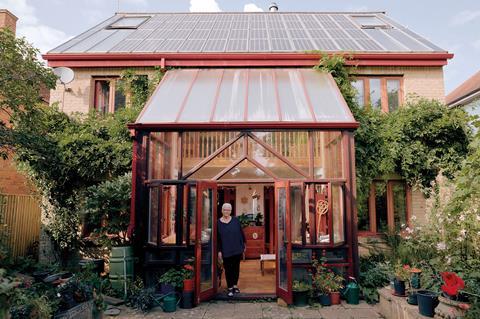
Heatwave Monday, 18 July 2022, Tisha Hagland and I made lunch for 10 architecture students from the University of Idaho. They were in Oxford for their summer school, and I invited them to my ecohouse for lunch so they could avoid the high midday temperatures in the heatwave.
Arriving at 1.30pm, the relief on their faces was clear as they walked from the 36ºC outside into the 21ºC in my dining room. “Thank goodness you have air-conditioning!” said one student. “No,” I replied, “I designed this house to withstand heatwaves and I will tell you how I did it.”
Most of us remember where we were during extreme weather events. Many of the Idaho students had lived through the late June 2021 heat dome in Idaho when temperatures soared to over 40ºC. On 29 June 2021, in nearby Washington state, temperatures in Spokane, Ephrata and Omak reached their all-time records at 43ºC, 46ºC and 47ºC respectively.
Some students coped by hanging wet sheets over windows and others left for cooler climes. In Spokane the utility company ran rolling blackouts across the city to cope with peak demand and at least 20 people died of heat stress, some in their own homes.
>>Also read: Things can only get hotter – so we must tackle overheating in buildings
>>Also read: Truss faces net zero dilemma in tackling energy crisis
>>Also read: We need evidence-based design to reach climate and wellbeing targets
People in the north-west United States and British Columbia were not trained to deal with such temperatures as they are in, say, Phoenix Arizona, where they even park air-conditioned buses across the city as cool refuges. In India’s hottest city, Ahmedabad, they have an advanced heatwave plan including inter-agency public awareness and community outreach programmes to keep people alive during the extreme heat.
So, how did I design the Oxford ecohouse to be 15ºC cooler inside than outdoors in this heatwave? Mainly by using lots of thermal mass and managing it. On 13 July this year, the press warned us of the coming heatwave due between 17 July and 19 July, so I started to drain the heat out of my high-mass house with effective night-time cooling.
In the evening I just opened all the small vents and windows around the house (in tilt-and-turn mode to outdoors for security) and the three Velux windows in the roof. The home became a cool night breezeway drawing heat from the structure until the globe temperature of the mass in the house fell to between 20ºC and 23ºC on 18 July.

During the day the house was shut up and the coolth remained stored in the lovely thick walls. If anyone tells you that only the top 25-50mm of thermal mass is “active” and useful for storing heat or coolth, they are trying to sell you a machine or a lightweight structure. It’s as simple as that.
To calculate the desired overall thermal mass of a building for floors and ceilings and internal partitions, the area of the exposed surfaces that can absorb and release heat is key. These surfaces must not be covered by carpets, cupboards, bookcases and furniture. Internal mass must obviously be shaded from direct gain in summer if possible, to avoid it heating up.
A problem when designing for high mass walls is that many of the steady state simulation programmes – including the Passivhaus planning package – simply do not model either mass or natural ventilation accurately, let alone dynamically. In fact, many models are set up in such a way to prioritise the U-value of a wall. This is the wrong answer for weather extremes and particularly during power outages.

We are told by some “experts” that an indoor temperature of 26ºC is around the highest temperature that humans can consider comfortable. But what about the billions of people all around the world who have been living happily and comfortably for millennia in temperatures way above that? Feeling is believing, and many of you on 19 July might have come into spaces from 37ºC outdoors into 26ºC indoors and thought this was cool.
Thermal comfort is a cultural construct and one that changes over time. People adapt to the temperatures that are the norm. If you live in a warmer country or building, you are comfortable at temperatures higher than if you live in cooler places.
It is globally detrimental that international comfort standards are written by middle-aged white men in suits from Europe or the US who are part of the HVAC [heating, ventilation, and air conditioning] establishment. The comfort standards and regulations they produce mandate narrow indoor comfort zones that only mechanical conditioning can produce.
This drives soaring energy use and increases costs and greenhouse gas emissions from buildings to meet often unnecessary heating and cooling temperatures. And, of course, increasing sales in HVAC equipment in the process.
Buildings from now on should contain at least one cool and one hot climate refuge
Susan Roaf
Traditional buildings worked in symbiosis with their occupants, co-evolving lifestyles and new construction elements in tandem to improve their climatic performance and experiences. In the cool climates of Scandinavia their culture now favours buildings that are conditioned all year around. But even there they are now suffering significant overheating in many modern buildings.
In France people typically heat buildings in winter and naturally ventilate them for the rest of the year. In southern Spain houses were designed to be naturally ventilated all year and could consequently get a bit cold in winter. Many then used a “brasero”, an under-table heater where they sat with a blanket over the table and their legs, similar to the “kotatsu” of Japan.
Two important lessons can be learnt from traditional buildings in a heating world. Thermal mass is very effective in extreme weather for dampening the temperature swings indoors (load shaving) in all seasons and to store energy from night cooling in summer, solar energy and radiant sources in winter (load shifting).
It is more economical to heat or cool a person than a whole building. The move to make everyone install whole-building heating and cooling systems such as heat pumps or hydrogen boilers is fine for the rich, but goes right over the head of the fuel poor who cannot afford to run such systems.
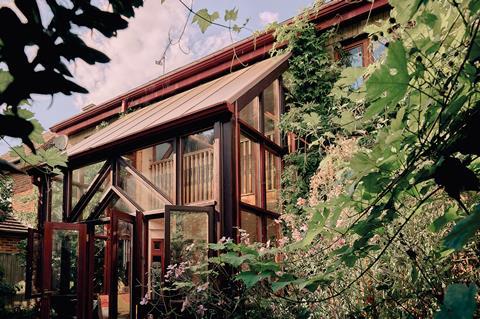
The aim from now on must be to design buildings that need minimal heating or cooling in the first place, and then to allow occupants to use low-tech, low-energy, person-centric solutions for comfort to be used like local fans or heaters. This must come before even considering expensive whole-building solutions.
A critical feature of such thermally resilient buildings is that they contain a range of different micro-climates – usually warmer facing the sun and cooler facing away from it. Buildings from now on should contain at least one cool and one hot climate refuge.
Local vernacular buildings have much to teach us. Jake Hacker, Stephen Belcher and Richenda Connell wrote an excellent piece for the UK Climate Impacts Programme way back in 2005 called Beating the Heat. They suggested we learn from proxy climates. London will have a climate like Marseilles by 2080 so we should learn from the south of France how to design London buildings today for climates from 2050 onwards.
Bjarne Olesen, ex-president of ASHRAE, explained to me that in the future buildings will have to be heated and cooled only when absolutely necessary and naturally ventilated for the rest of the year. So how many of you out there are designing for that to happen?
Regulations on thermal comfort and ventilation are written by HVAC engineers, reflecting the interests of an industry paid according to how much equipment they put into buildings
Susan Roaf
It is a growing imperative, because buildings are responsible for over 40% of global emissions from electricity generation. To return every building to being capable of being naturally ventilated, a radical revision of the building regulations is essential. Can anyone see that on the horizon when the HVAC industry literally writes those very regulations?
Isn’t it time for architecture to come into its own again by championing good climatic design at the very least and taking back ownership of building performance? The net zero targets will never be reached if the main solution to emissions reductions is a heat pump or a hydrogen boiler. It is time to get real.
Houston – we have many problems – like you did in the Texan ice storm of February 2021, when 280 people died of cold. For a start, many architects design buildings with no, few or barely opening windows. Secondly, fashion dictates that homes have large open-plan living areas with kitchen, dining room and seating areas in large, expensive to heat and easy to overheat spaces.
There are no thermal refuges any more, no snugs or cool rooms. People often retire to their bedrooms nowadays to get and stay affordably warm in winter, on top of or in their beds.
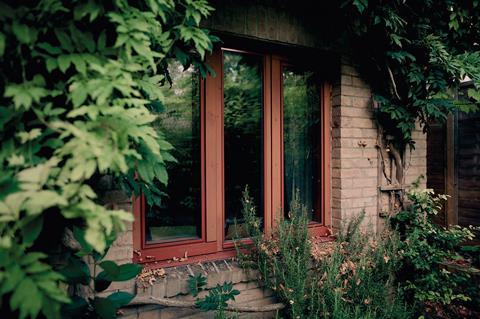
At the heart of the problem is the “affiliation bias” that is patently inherent in the fact that the building regulations on thermal comfort and ventilation are written by HVAC engineers, reflecting the interests of an industry that is paid according to how much equipment they put into buildings. Where is the incentive to require effective windows and natural ventilation systems? Or the use of low-energy personal comfort technologies?
Why is one profession able to mandate that a homeowner has to buy this or that technology when they may well be able to get by with individual room systems that are only used when the room is occupied? The list of drivers of high emissions from homes goes on and on.
Education is siloed. HVAC engineers are not typically taught how to design for thermal mass and natural ventilation. They only know how to size HVAC systems. Architects now too often assume that they are not responsible for the thermal performance of buildings and are cowed by the regulations and some of the pseudo-scientific rationales behind them. They are not equipped to argue with technical consultants and understand the real issues behind effective marketing campaigns on single issues.
One trope swallowed whole by designers was that solar systems are simply “eco-bling” rather than a way to minimise imported grid energy into a home.

Another recent narrative is that buildings should be lightweight because the embodied energy of a structure on construction is all that matters in calculating its emissions – an approach that favours the timber industry and developers of cheap housing.
In reality, it is the total energy over 50 or 60 years that really matters, including the running costs of the building over time. And who wants to be stuck in a highly insulated hot box with no opening windows when it is 40ºC outside and the grid fails so the mechanical ventilation and heat recovery system ceases to work? Madness.
My 28-year-old ecohouse keeps me safely warm in winter and cool in summer. I do not need to install expensive air-conditioning because it stays deliciously cool during this and future heatwaves. It boasts the first solar roof in Britain, built in 1995, that still works brilliantly. The ecohouse over the past 12 months used 9kWh/m2 of imported gas and electricity, in a 232m2 six-bedroom home, while simultaneously exporting 1,655kWh of solar electricity back to the grid.
Perhaps nothing I write here will persuade designers not to design open-plan spaces with glass walls made up of patio doors. Many could not consider designing good solid walls instead, preferably with filled cavities punctuated interestingly with useful windows.
That is perhaps until they themselves suffer from extreme heat indoors in their own homes, or until they cannot pay their own energy bills, or a loved one is badly impacted by extreme heat. Perhaps then they might admit that their profession has ceded too much power around building performance to the HVAC engineers and the regulations they generate.
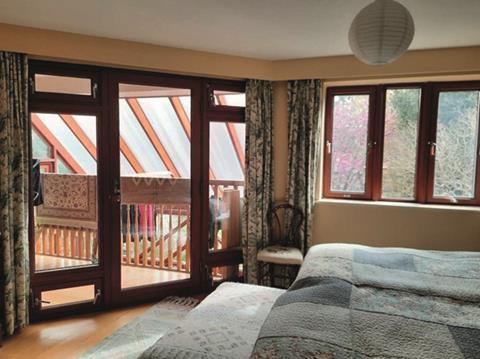
Maybe once they are made accountable for the costs and emissions of the buildings they design, they will wake up and count the costs and the coffins resulting from their designs. Who knows what the future holds? This July the heatwave lasted only three days. In July 2003 – when 70,000 died in the heatwave across Europe, many in their own homes – the heat lasted for 10 days.
I welcomed the Idaho students into my Oxford ecohouse during a heatwave in July when it was 36ºC outside, and 21ºC indoors without mechanical systems. Just maybe, those students we made lunch for will never feel the same way about thermal mass again. They will have “got it”.
None of us knows our own limits until we cross over them and look back. That one visit may well have changed their professional lives forever and perhaps saved actual lives in the future because, actually, as designers we need to feel the difference to believe it.
Three really cool ecohouses
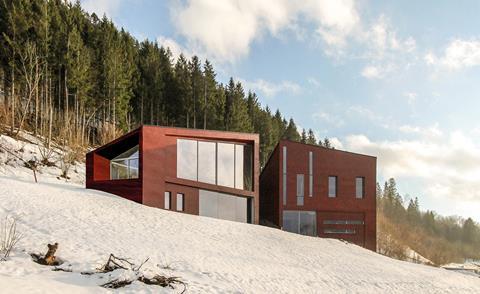
Sylling House by Julian Kinal
This timber frame house is built into a hillside in Norway. It was engineered to resist an extreme northern European environment, including heavy wind and snow loadings. It was the architect’s first project after leaving Rafael Viñoly Architects and setting up practice in Norway.
The Corten steel clad building sits on a slope overlooking a fjord, with a roof designed to withstand large snow drifts. The home is divided into two wings, one which houses the living room and kitchen and the other, separated by an external staircase, containing the bedrooms and an office. The design was driven by three main considerations: sustainability in use, longevity of use via high-quality construction and materials, and an efficient construction programme.
To reduce the length of the programme, the timber frame and steelwork was fabricated using offsite manufacture with CAD-CAM technology and assembled on site. The use of underfloor heating, a ground-source heat pump, triple-glazed windows, high-specification insulation and a reflective foil vapour barrier helped to achieve very high levels of energy efficiency.
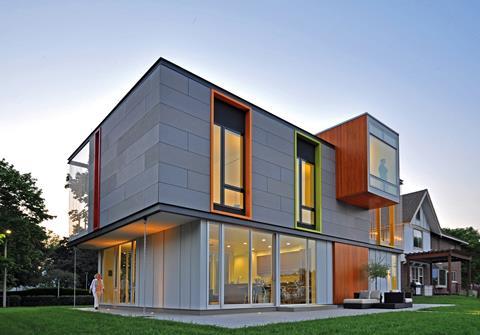
OS House by Johnsen Schmaling Architects
The OS House was one of the first LEED Platinum residences in the Midwest of the United States. Designed by Johnsen Schmaling Architects, it has a rainscreen made up of a system of concrete panels hung between steel channels. This assembly creates an eight-inch ventilated envelope that delivers superior thermal performance.
The house is smaller than the US average and its size was a key part of the environmental strategy. By minimising the amount of space given over to such things as walk-in wardrobes and over-sized bedrooms, the building is made easier to heat and cool. Natural ventilation comes from the cooling breezes from Lake Michigan.
The design uses a wide range of sustainable products, including high-efficiency glazing, a ventilated rainscreen, permeable surfaces to mitigate stormwater run-off and low-flow water fixtures. These materials, when combined with other design elements, including photovoltaic roof laminates and a geothermal heating/cooling system, enable the building to run off-grid for much of the year (and to operate as a net energy producer during the sunniest periods of the year).
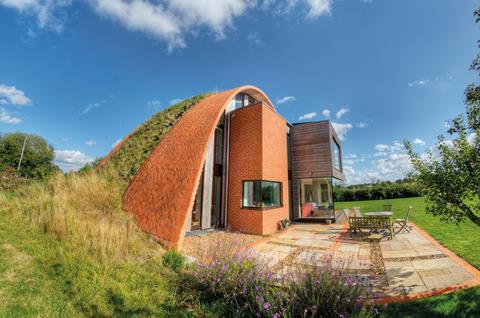
Crossway by Hawkes Architecture
Crossway was designed by architect Richard Hawkes and features a unique timbrel vaulted parabolic arch – the only one of its kind in the UK. The striking structure was built using 26,000 handmade clay tiles, with construction completed during 2008.
The thermal mass of the arch, as well as the turf roof, helps maintain a steady internal temperature, without the need for mechanical cooling.
As far as possible, this house was constructed from locally available and sustainable materials. It has since achieved an A+ EPC rating, in large part thanks to the use of renewable technology and an energy-efficient passive solar strategy.
Susan Roaf is emeritus professor of architectural engineering at Heriot-Watt University, Edinburgh. She is best known for her work on adapting buildings and cities for climate change. She has written and edited 22 books on sustainable design, including Adapting Buildings and Cities for Climate Change.




























1 Readers' comment